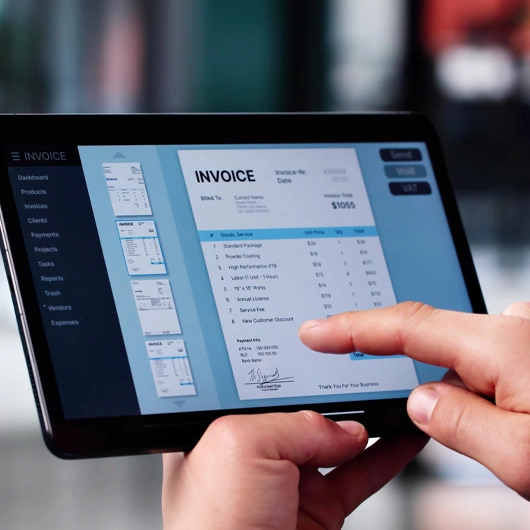Make the Most of Evolving Technology Trends
Make the Most of Evolving Technology Trends
As technology continues to evolve, business leaders can capitalize on a broad range of opportunities for improving efficiency, optimizing productivity and planning with greater strategic insight than ever before. In fact, technology tools have become so prevalent that sorting through the options can be overwhelming.
This article zones in on four ways your business may tap into emerging or established technology trends to help strengthen your team and enhance your efficiency.
Automate processes to boost efficiency and employee engagement
Business leaders seeking more efficient means of carrying out routine manual tasks and accelerating processes are embracing automation to not only save time but also make better use of team members’ times and talents. Freed of these repetitive tasks, employees can focus on more meaningful, higher-value activities.
For example, in retail, manufacturing, healthcare and other industries, automated inventory management software can replace tasks such as manual counting, data entry and order processing. Employees can then shift their focus to more strategic responsibilities — inventory quality checks, customer service, data analysis and the like. Similarly, accounts payable (AP) automation can streamline payment processing workflows for finance/accounting teams. In each of these, as well as many other, cases of automation, built-in reporting and analytics provide transparency and insight to support management as they forecast and plan.
Adopt collaborative technology to foster a teamwork mentality
Digital communication platforms designed to help remote employees and teams collaborate became the hot ticket when the COVID-19 pandemic physically separated workforces in 2020 and 2021. They enabled businesses to maintain some measure of continuity by keeping communication and ideas flowing among team members.
Today, collaborative technology continues to provide a channel for team members to work toward collective goals through file-sharing and project management tools, as well as videoconferencing and team chat, whether they work in separate offices or a central location. It can be particularly valuable in helping companies with remote or hybrid workers foster a sense of team cohesion. Collaborative technology tools may also contribute to productivity goals by streamlining and centralizing communication.
Safeguard data and intelligence with zero trust security
“Never trust; always verify” is the ideology behind zero trust security, a strategy developed to safeguard companies’ networks against data breaches and other cybersecurity threats.
Addressing the growing sophistication and frequency of such threats, the zero trust model holds that no user or device is inherently trustworthy. Every attempt for access to the company network — whether coming from within or outside of the business — must be authenticated and authorized. This approach stands in contrast to standard protocols of the past, which assumed users and devices behind the corporate firewall were safe.
In a zero trust environment, the system does the following with each request for network access:
- Verifies user identity using multi-factor authentication (MFA)
- Assesses the security of the device, including whether the operating system is up to date and antivirus software is active, per company standards
- Checks the location, time of day and normal activity patterns of the user to determine the legitimacy of the request
- Grants least-privilege access, meaning the bare minimum needed by the user to perform their tasks, contingent upon passing checks 1, 2 and 3 above
- Denies access if the user or device did not pass any of checks 1, 2 or 3
Zero trust security is just one element of a robust cybersecurity program. Tools such as firewalls, antivirus software, encryption and password managers, plus investments in online safety training for employees, are important as well.
Leverage analytics tools to inform your decision making
What once took days, weeks or even months of information gathering and analysis can now be processed by technology in minutes — and on an ongoing basis — to help business leaders make decisions and strategic plans. Data-driven decision making isn’t meant to fully replace intuition, but it offers an objective foundation on which to build.
Identifying market trends and opportunities, benchmarking performance against competitors, optimizing pricing, personalizing customer experiences — business leaders are using analytics tools to help them in a broad range of areas. With the right tools, you can keep your finger on the pulse of customer behaviors, website traffic, marketing performance, sales ups and downs, market conditions, etc.
You may be able to incorporate these tools relatively inexpensively, too, depending on your needs. Several online platforms offer free analytics tools or, for a cost, you can choose a more robust or specialized platform to meet your company’s needs.
Keeping up to date on business technology advances and the availability of new tools — those specific to your industry as well as those with broader applications — can help you identify which solutions offer your business new opportunities to flourish.
This article is for general information purposes only and is not intended to provide legal, tax, accounting or financial advice. Any reliance on the information herein is solely and exclusively at your own risk and you are urged to do your own independent research. To the extent information herein references an outside resource or Internet site, Dollar Bank is not responsible for information, products or services obtained from outside sources and Dollar Bank will not be liable for any damages that may result from your access to outside resources. As always, please consult your own counsel, accountant, or other advisor regarding your specific situation.
Posted: October 15, 2025




